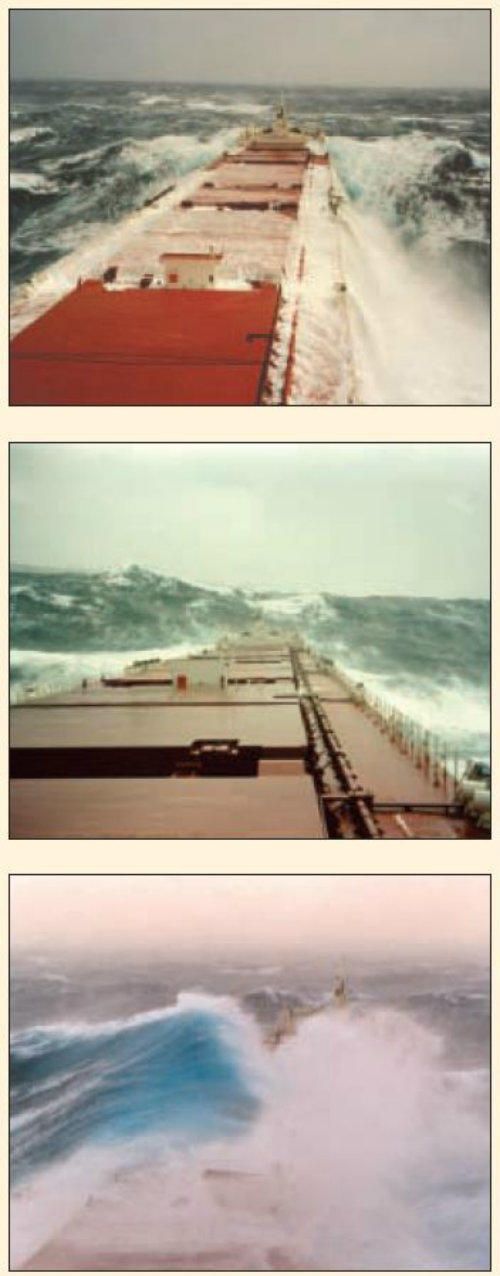200716 Riding out a storm
Apologies MARS 200716
The photographs below purporting to show heavy weather in the English Channel were incorrectly attributed. Although we received them from a well-respected and reliable source, it appears that they have been published on the internet on various occasions before, with differing origins claimed for them.
However, regardless of where they originated, these pictures present powerful reminders of the dangers of heavy weather and the Editor’s comments on the need for good seamanship are still relevant:

Editor's note: These dramatic pictures show the fury of the storm that hit the English Channel and the North Sea in January 2007. Amazingly, this ship rode out the storm at anchor in the North Sea. Worse conditions in the western approaches to the English Channel caused a large container vessel to suffer hull failure and subsequently to be beached off the south-west coast of England, resulting in many containers, some loaded with toxic substances, to be washed up on the beaches: see picture, p22 of March 2007 Seaways.
However, it is important to consider the consequences of remaining at anchor in a storm, which may present the following hazards:
Extreme loads on the anchor and cables, often far beyond the safe working load and the anchor's holding power, that will in most cases result in the anchor dragging or even the cables parting with loss of anchors and cables;
Violent random motions in all six degrees - yaw, pitch, roll, heave, surge and to a lesser extent, sway - all of which will impose additional shock loadings to the anchor and cable and associated fittings;
Rapidly alternating shear forces and bending moments when lying head into sea and swell, changing to slamming and severe variations in thrust on the side shell when at extreme yaw;
Proximity of other vessels, port installations and a lee shore and risk of collision / contact damage / stranding, with attendant claims liabilities;
Possibility of striking bottom in case of limited underkeel clearance;
Probable damage to or loss of cargo;
Difficulties in obtaining timely assistance in case of the ship standing into danger;
Risk to tank vent heads and possible seawater contamination of fuel and lubricating oils.
In many regions, a naturally deeply indented and hilly coastline, such as Korea or Norway, may offer reasonably safe storm shelters - but in the absence of such features it may still be prudent to weigh anchor at the earliest sign of an approaching storm and heave to in clear and deep waters. High-sided ships, such as container, passenger, livestock and vehicle carriers, are vulnerable, especially the last two, given the generally light drafts and low propulsion power that make them virtually uncontrollable in high winds.
There have been a number of maritime casualties in which a delayed decision to weigh anchor or to move offshore resulted in serious or total losses.
